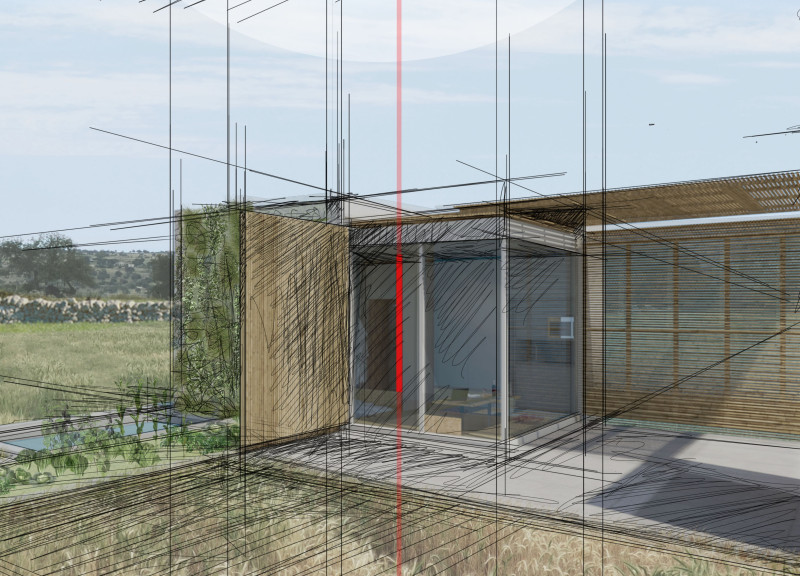5 key facts about this project
Red.point is located in the Sicilian countryside near Ragusa, Italy. The design is influenced by the surrounding landscape, which includes wheat fields, olive trees, and traditional stone walls built without mortar. The intention is to create a calm atmosphere that allows for relaxation, positioned away from the noise of city life. It integrates well with the local environment while emphasizing flexibility and sustainability in its design.
Main Concept and Adaptability
The main idea behind Red.point is changeability. This concept enables the interior and exterior spaces to be adjusted based on different needs and environmental conditions. Rotating and sliding walls play a crucial role in this adaptability, allowing for immediate changes to the building's shape and function. A central column acts as the key structural element. It contains necessary wiring and features blinds that can separate areas such as the bathroom and bedroom.
Spatial Efficiency and Integration
Efficiency in space usage is a priority in the design. Furnishings are built into the flooring to minimize clutter and enhance usability. Two tables can be moved up and down thanks to telescopic legs, while the bed is accessed through a sliding panel that also hides storage spaces. The fixed wall contains the bathroom, kitchen, and storage, with hinged doors that provide flexibility in how the living area is used.
Sustainability Initiatives
Red.point aims to minimize its environmental impact through various sustainable practices. A rainwater collection system is included to reuse water for domestic hygiene, toilets, and irrigation. This approach highlights effective resource management. Additionally, two small pools are integrated into the layout to enhance passive cooling, improving indoor comfort while supporting efficient water handling.
Interaction with the Environment
The project creatively incorporates plants for energy generation. By using organic materials from roots, the design can produce electricity. There is also a dedicated area for phytodepuration, which helps to reduce water waste. Vegetation on the building's facade provides thermal insulation and supports a vegetable garden for local food production. The roof features raised bamboo canes that encourage natural airflow and help regulate temperature.
An open floor plan allows for various spatial configurations. The eastern and southern facades can rotate to create outdoor spaces, while the green wall on the southern facade and the rotating stone wall on the western facade enhance the bedroom's connection to nature.
Ultimately, the building's thoughtful design fosters a strong relationship between the architectural form and the surrounding landscape, encouraging residents to engage meaningfully with their environment.






















































